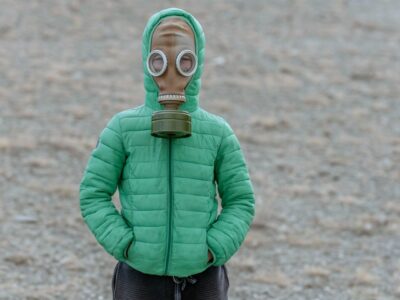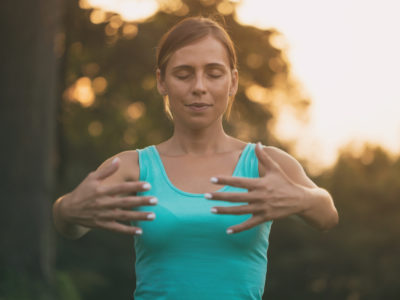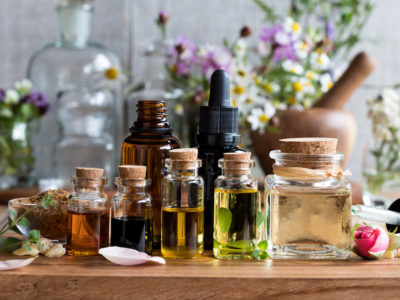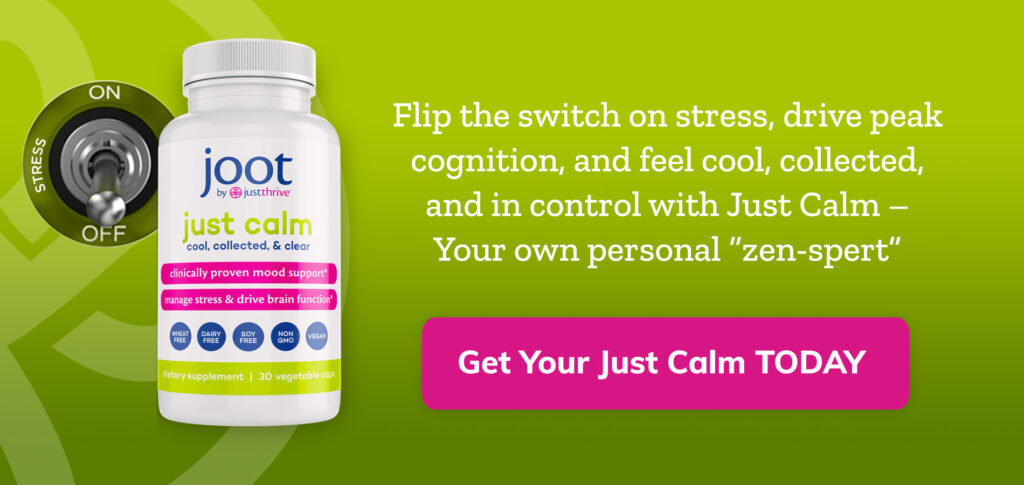Table of Contents[Hide][Show]
The tell-tale marks are a sure giveaway when someone has had a recent session.
You might have seen them on your fellow gym-goers, professional athletes on television, or even just on a friend’s social media. Large, circle-shaped marks peeking out from over shirt collars or behind shirt sleeves.
It’s from cupping. And even if you’ve never tried it before, chances are you know someone who has.
Should cupping be part of your wellness journey? Let’s explore just how this therapy works and the many conditions it can treat, so you can decide for yourself. You might be surprised at how well it can integrate into your lifestyle!
What Is Cupping?
Cupping is an alternative form of medicine that can help treat both mental and physical issues. In recent years, it has skyrocketed in popularity, thanks in part to swimmer Michael Phelps’ cupping marks at the 2016 Olympics.
But just because it’s trendy doesn’t mean it’s new. In fact, cupping has been around for thousands of years, with roots in ancient Chinese, Egyptian, and Middle Eastern cultures. It even makes an appearance in one of the oldest medical textbooks in the world: Ebers Papyrus, written in 1550 BC.
During a cupping session, a licensed therapist will place cups along different parts of your body. Most commonly, they will be placed on your back and shoulders for three to five minutes.
These cups aren’t just drinking cups, though! They’re designed specifically for this type of therapy. While glass cups tend to be the most common, cupping therapy can be done using cups from different materials.
- Bamboo
- Earthenware
- Glass
- Silicone
These cups create suction on your skin (hence, the marks resulting from a cupping session). Blood vessels (usually tiny capillaries) along the cup will expand and break open, leading to the classic discolored marks associated with cupping.
As part of the healing process, your body will send oxygen-rich blood to repair the broken blood vessels, treating the cupped area as an injury. So for example, if you have sore muscles, cupping along the sore spots would help repair them more quickly.
Over centuries, cupping has been used for many purposes, including:
- Help with pain relief
- Correct blood flow issues
- Aid in relaxation and well-being
- Work as a type of deep-tissue massage
Related
10 Natural Remedies for Back Pain
Imagine not being able to sit up straight at work. Or imagine the guilt of having to let your kids down because your back pain is wrecking havoc on your ability to play with them. But don’t feel too guilty. Back pain is one of the most common health problems in the nation, more so …
The Ancient Philosophy Behind Cupping
Cupping is often performed by doctors of traditional Chinese medicine, and so the philosophy behind it is distinctly eastern.
Cupping is thought to unblock your qi (pronounced “chee”). This is the life force that flows through your body. When it’s moving freely, you feel strong, alive, and vibrant. When it’s blocked, your energy becomes stagnant and you feel sluggish and fatigued.
By increasing blood flow and circulation, cupping is thought to facilitate the energetic, fluid flow of your qi. It’s also believed to bring balance back to your system, bringing harmony to the yin and yang within your body.
Who Can Perform Cupping Therapy
Different health professionals can be trained and licensed to give cupping therapy.
- Acupuncturists
- Chiropractors
- Doctors
- Massage therapists
- Physical therapists
In general, however, only medical doctors can perform fire cupping…which we’ll explain below.
For the optimum (and safest!) results, make sure you work only with licensed cupping therapists. If you’re not sure where to find one, ask for recommendations from family and friends, read online reviews, and talk to your regular physician.
Does Cupping Hurt?
If you’ve never had a cupping session, you might be slightly put off by the marks it leaves behind. Surely, anything that leaves those kinds of bruises has to be painful, right?
Well, we’ve got good news.
Cupping doesn’t have to be painful at all! You might feel a slight discomfort or pinching sensation while the cups are suctioned on, but that’ll pass as soon as the cups are removed.
What Happens During a Cupping Therapy Session
Your cupping therapist will determine where to place cups, depending on how you’re feeling and what results you want. The number of cups you receive can depend on your familiarity with cupping and what you want to achieve. For your first sessions, you’ll probably only get three to five cups. After that, you may get up to seven cups per session, although more than that would not be unusual if you and your therapist decide on it.
There are a few different methods of cupping. Let’s take a look at each of them.
Fire Cupping
If you’re using fire-cupping, your cupping therapist will start by placing a flammable material such as alcohol, herbs, or paper inside the cups. Often, they’ll soak a cotton ball with alcohol and rub that along the inside of your cup.
Next, your cupping therapist will set the material on fire for a few seconds before putting it out. Once the fire goes out, they’ll place the upside-down cup on your skin. As the air inside the cup cools, it forms a vacuum or suction against your skin. This is when you may feel a pulling effect.
Because there is the possibility of burning your skin, fire-cupping should only be done by a licensed medical practitioner, such as an acupuncturist.
Vacuum Cupping
Vacuum-cupping is very similar to fire-cupping: both use well-placed cups to create a vacuum on your skin.
However, vacuum-cupping is performed without fire or high heat. Instead of glass cups, your cupping therapist will likely use silicone cups. These are attached to suction handles that your therapist will use to control the intensity of the suction.
If it’s your first cupping session or you are more sensitive, they can tone down the suction to make the experience more enjoyable.
Dry Cupping Versus Wet Cupping
Both of the cupping methods described above (fire-cupping and vacuum-cupping) are examples of dry cupping.
However, there are times when your cupping practitioner might suggest the less common wet cupping.
Wet cupping begins the same way. However, after the cups are removed, a surgical-grade scalpel is used to make small cuts in the skin. Then, your cupping therapist does a second cupping session.
Wet cupping will result in bleeding, which many feel eliminates toxins from the body. If you do a wet cupping session, you’ll want to follow up with proper wound care, including antibacterial ointment and bandages.
The Benefits of Cupping
What does cupping do for your body? It can be used to effectively treat many different conditions.
One of the most common uses is by anyone who performs intense exercises, whether you’re a professional athlete or working out at home. Cupping along sore muscles can help repair them more quickly and keep you exercising at a high level.
Cupping can also be used to treat:
- Arthritis
- Back, neck, knee, or shoulder pain
- Breathing problems, including asthma
- Carpal tunnel syndrome
- Gastrointestinal disorders (including Irritable Bowel Syndrome)
- Headaches, including migraines
- High blood pressure
Cupping and Massage
The use of cupping in massage can be especially effective. When you think about it, cupping is essentially the opposite of a massage. Instead of pushing down on the skin, it pulls up.
But like massage, cupping can reach down beyond the skin and into your muscles, loosening them and promoting faster healing. So when used together, they make an incredibly powerful duo.
If you do decide to combine cupping with a massage, your massage therapist will begin with the cupping portion of your treatment. The cups will loosen your muscles and fascia, allowing the massage to penetrate deeper into your muscles. And the increased blood flow from the double treatment will help muscles repair and recover more quickly.
Cupping and Toxin Removal
Studies also show that cupping therapy is an effective way of removing toxins trapped at a cellular level.
The increased blood flow can stimulate your lymphatic system, which is responsible for removing waste from your body. Drinking plenty of water after a cupping session can speed up the process, flushing out toxins more quickly and effectively.
Related
The Natural Toxins In Our Environment And How To Protect Your Health Against Them
Our natural environment is full of toxins we can’t entirely eliminate, but we can all learn how to avoid them. Here’s how you can do that. What Are the Toxins in the Natural Environment? Naturally occurring toxins in our natural environment are also called environmental toxins. They include a number of potentially lethal chemicals that …
The Side Effects of Cupping
Because it’s not an invasive procedure, there are very few adverse side effects associated with cupping. The most common side effect, as we discussed earlier, is the temporary appearance of cupping marks. These will generally disappear in just a few days.
Some side effects you may see include:
- Bruising
- Burns
- Mild discomfort
- Skin infections
There is also the chance that you could come in contact with a blood-borne disease such as Hepatitis B or C. This usually happens if the cups or other equipment are contaminated with blood and not properly sterilized between patients.
To minimize the chances of any side effects, make sure you go to a trained health professional for your cupping session.
Who Should Avoid Cupping
Because of its relatively few side effects, almost anyone can get cupping therapy. However, there are a few pre-existing treatments that may rule out cupping as a treatment option.
- Bleeding disorders, such as hemophilia
- Blood clotting issues
- A history of strokes
- Sensitive skin or skin conditions, such as eczema or psoriasis
- A history of seizures
If you have any of the conditions listed above, cupping might not be right for you. Talk to your physician before making any medical decisions.
Final Thoughts
A non-invasive treatment option with centuries of proven results? Yes, please!
If you’re experiencing some of the symptoms we discussed above and haven’t tried cupping yet, maybe it’s time to consider adding this effective alternative therapy to your medical arsenal. You can continue your current treatment plan, and use cupping to amplify its results.
With little to no side effects and a host of benefits, cupping could be just the boost your health needs.
You May Also Like…






